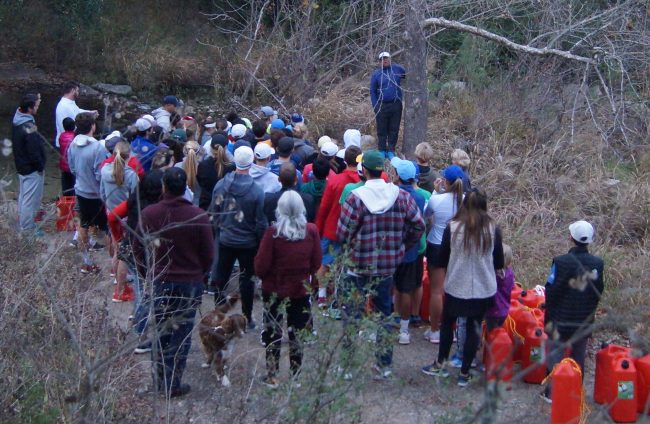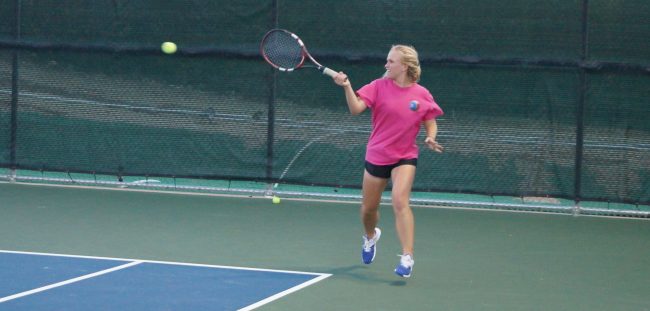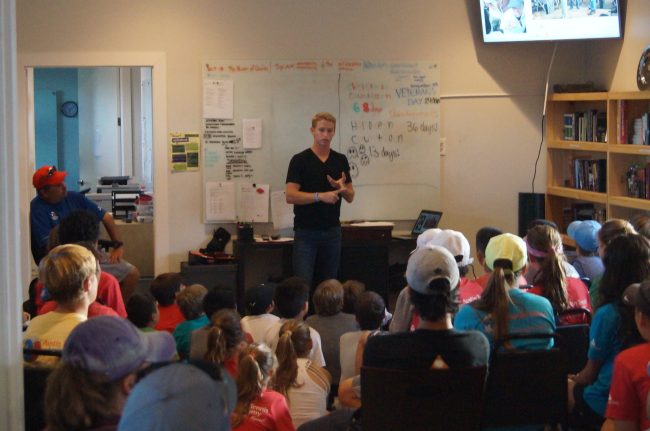Pictures From The Annual Walk For Water Event At ATA
The Austin Tennis Academy players, parents, and coaches participated in the annual Walk For Water event on the ATA campus yesterday afternoon as part of the 2017 Playing For Glimmer campaign.
The group carried jerry cans full of water on a course around the facility designed to mimic what women and girls in rural Ethiopia do daily to fetch water, oftentimes walking for hours on much tougher terrain carrying 40-pounds at a time.
After the walk, the group came together to watch a short video on ATA alum Breck Spencer, who traveled to Ethiopia and experienced the actual walk for water:
Breck and Donna’s Walk for Water | March 7, 2012 from A Glimmer of Hope on Vimeo.
Many ATA students have created their own campaigns to help contribute to the overall ATA effort. After watching the video, Coach Newman encouraged all students to get involved in some way.
Learn more about the overall Playing For Glimmer Campaign here. Scroll down to view all of the student campaigns.
Below is a gallery of pictures from the 2017 Walk For Water at ATA.











